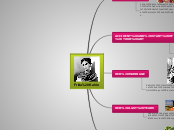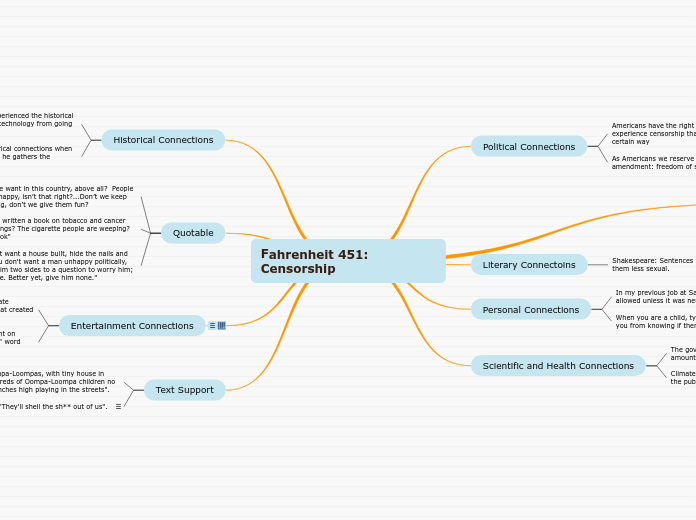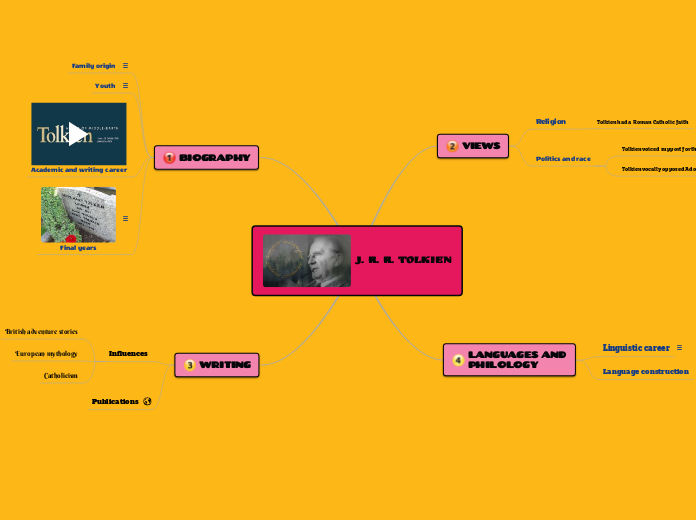Social organization: Prisoners were organized into barracks depending on their work. Shared bunks, shared toilets, little private property. There was a hierarchy of the prisoners: criminals were at the top, Jews at the bottom. Each barrack had a "Kapo in charge" usually a German criminal.
Proud of Canada
2000's
Beverly McLachlin becomes the first female chief justice of the Supreme Court of Canada
WW2
Mackenzie King was the Prime Minister of Canada during WW2. He warmly supported the British Prime Minister of appeasing Adolf Hitler.
Before the war begins: Hitler came to power in 1933. As early as 1934, he ordered work camps to be built in different parts of Germany. After outlawing other political parties, Hitler begins political opponents and other criminals to these work camps. Mauthausen was one of these camps built near a stone quarry.
The final solution: As Hitler realized he was losing the war murder in the camps were accelerated When Allied forces liberated the camps, they found starving prisoners and skeletal corpses. Over 6 million people died during the Holocaust. Despite overwhelming evidence, some people deny it happened: it is a crime in many European countries to do this.
Camp conditions: That survived "selection" went through dehumanizing process. Shaved bodies, prison uniforms, tattooed numbers (at Auschwitz). Rations were small, work was hard = slave labour. Satellite camps were established: local businesses could rent labour. Nazi doctors conducted medical experiments on prisoners.
Crematorium: After being gassed to death, their bodies were put into huge ovens in the crematorium. The chimneys dominated the landscape and the smell of bodies burning filled the air. To remove the evidence of murder, the furnaces burned day and night.
The end of the line: Prisoners were brought into Auschwitz by rail car. They were immediately sorted: one way led to the as chambers , the other led to the work barracks. Those marked for the gas chamber were told they were going to the showers. undress, leave your possessions outside. Prisoners belonging's re-distributed among the Nazis.
As the war begins: Nazis set up concentration camps throughout Eastern Europe. There are 2 different kinds of camps; work camps (concentration camps) and death camps. Auschwitz was a death camp built and expanded in 1941. Auschwitz 1 built pre-war to house prisoners of WWI. Auschwitz-Birkenau was the second part of the camp, built especially as a death factory. The gate at Auschwitz reads "work makes you free".
Enlistment: 58,000 people volunteered. Attractive $1.30/day and $60/month for a wife and $30/month per child at home. Some still had strong ties to Britain. New sense of Canadian pride.
War again on land: Canada's army consisted of 4500 mens, 29 Bren guns and 23 anti-tank guns, 16 tanks, no artillery. Canada's Air Force consisted of: 3100 men, 270 OLD aircraft, 19 Hurricane combat fighters. Canada's Navy consisted of: 1819 sailors, 13 ships.
Canada's Choice: Training the Troops; Canada not prepared for war. Canadian forces expanded rapidly. Training bases established across Canada. BCATP had 97 training schools. Trained 50,000 pilots, 30,000 navigators and 50,000 other air crew. 2 billion to train.
Canada's Choice: Aboriginals enlisted at a higher rate than any other group. Tommy Price an Aboriginal, was once Canada's most decorated soldier.
Allies: Britain, USA, Canada Axis: Germany, Italy, Japan.
Canada's Choice: Why was it significant that Canada waited one week after Britain to declare war? Because they were their own country. In WWI Britain declared war for Canada. In 1939 Canada is independent and declares for itself. Many Canadians were reluctant to be drawn into war again. King hated war, but saw this as an opportunity to impress the world. BEFORE declaring war, War Measures Act declared giving government special powers to arrest and detain enemies. Government censors information and regulates economy. Munition plants begin producing. Unemployed have work now. French Canadians didn't feel ties to help Britain once again. Canada now in control of when and how it participate in WWII.
Canada's Early Contribution: At first King says Canada will only provide supplies and not troops. Didn't want to strain economy or increase England/French tensions. British commonwealth Air Training Plan. British pilots trained in Canada. Good for Canadian economy. Effort on Canadian soil pleases Quebec.
Lessons: Some historians argue that Dieppe was a useless battle. Others argue that it was necessary lesson in preparation for D-Day. Better planning would have avoided heavy casualties.
Losses: Of the 5000 Canadians participated, only 2210 returned, mny injured. 1946 prisoners of war. 908 killed.
The outcome: A few soldiers made it to the sea wall for shelter but could not be evacuated and had to surrender. Some Canadians met little resistance and were able to destroy some large coastal guns, but suffered losses when German reinforcements arrived.
The Raid's Flaws: Aim was to storm the beach just before dawn, with 5000 soldiers destroy coastal defences and seize a small airport. Lost element of surprise, encountered a German convoy. Arrived in daylight. Poor intelligence about the beaches (cliffs and rocks). Poor ship to shore communication. Not enough naval or air support.
The Dieppe Raid: Why was the raid planned? Stalin was demanding a second front. Assess and test German defences. Practice for full-scale invasion. Canadians were restless. Boost morales.
War begins: September 1 1939, Hitler invades Poland. Britain and France decide this is to far and declares war on Germany. Canada declares war one week later. "Blitzkrieg - The Lightening war": Hitler captured Poland in less than one month.
War at Sea: The Royal Canadian Air Force; Tiny Navy grew from 400 ships to 100,000. Played an important role in the Battle of the Atlantic against u-boats. Britain would have starved without the convoys of supplies. Until 1942 Canada was alone fighting German underwater menace with corvette ships. German u-boats were doing lots of damage. Some even got into the St. Lawrence River and sank ships in Canadian waters. Contribution of Canadian Merchant Marines was nothing less than heroic.
Social Impact: 1 and 12 served. increase government role. National Bank. CBC. Rationing (meatless days, no cuffs) Wage freezes. Media censored.
Conscription Crisis (1942): King promised no conscription because he didn't want to divide the English and French canadians again. Then he had conscription only for service in Canada. In 1942 he asked the country to release him from his promise. English canadians agreed to conscription. French canadians say "NO" as they wanted Canada to declare a 'friendly neutrality".
Woman-Back the up: Worked in factories. Worked on farms. Did medical care. In 1939 only 600,000 woman were employed by the end of the war, 2 million woman were employed.
Canadians on the Homefront: Canadian Woman's Auxiliary Air Force (CWAAF) established in July 1941. Canadian Woman's Army Corps (CWAC) established in August 1941. Woman Royal Canadian Navy Service (WRENS) established in 1942.
Canadians on the Homefront: Woman in the Armed Forces; 1941 woman were permitted to join. A turning point for woman. Recruit woman who were single because they didn't want to disrupt child raising (thought delinquent children were caused by mothers who worked). Evening shifts given to mothers. Became radar operators, truck drivers, ambulance drivers.
The beginning of WWII: Policy of Appeasement: In 1938 Hitler took over Austria with the goal of uniting all Germans and creating "living space" for Germans. Hitler than threatened to occupy parts of Czechoslovakia that had a large German population. England and France decided to give into Hitler's demands and hoped that he would stop once he had Czechoslovakia. They even admitted that the Treaty of Versailles was to harsh on Germany and that they would not have to pay for the war damages.
WWII Timeline: September 1, 1939; Germany invades Poland. September 3, 1939; Britain and France declare war on Germany. September 10, 1939; Canada declares war. 1940-1943; Battle of the Atlantic. 1940; Italy and Germany invades North Africa and Eastern Europe. June 22, 1940; France surrenders to Germany. August 1940; Battle of Britain begins. June 1941; Germany invades the Soviet Union in Operation Barbarossa. December 7, 1941; Japan bombs Pearl Harbour in Hawaii. August 19, 1942; Dieppe Raid. 1943; Allied forces invade Italy. 1944; Soviet troops advancing into Eastern Europe, Germany retreats. June 6, 1944; D-Day. May 8, 1945; Germany surrenders. August 6, 1945; Atomic bomb dropped in Hiroshima. August 9, 1945; Atomic bomb dropped on Nagasaki. August 15, 1945; Japan surrenders. WWII ENDS!
The Plan: Highly planned and practice. 5 Divisions landed along 80 km of beach front. Canada landed on JUNO BEACH. Attack preceded by air and sea bombardments to knock out as many German positions as possible. Troops parachuted in the night before to cut off German reinforcements. 15,000 Canadian troops were involved. Weather slowed down the attack. D-Day was successful; Canadians accomplished their goals of securing land and villages. The Normandy campaign was successfully complete in August 1944 the troops liberated Paris. March 1945 Allies invade Germany. Canadians suffered 1074 casualties, including 359 killed.
D-Day: By 1944 Germany was occupying most of Europe; Anticipating an attack, Hitler had built up the defences along the Atlantic coast. "Operation overload" was the Allied plan to attack and open up a western front.
Refugees: Going home not possible for all. Millions of refugees left in war camps including concentration camp survivors with no homes or belongings. Canada accepted 165,000 who spoke no English. Concern that these immigrants may change the composition of Canada's population so they discriminated against Italians, Greeks, Jews and non-whites. Soon realized they created jobs and opened doors to all.
New Canadians: 1 and 5 vets returned with a war bride and children. 48,000 war brides a kids came to Canada.
Post-war Era: Immediate Post-war Era; Government attempts to ease vets back into society in a positive manner by giving pre-war jobs back, giving war widows and vets preference for government jobs, free tuition and living allowances for those wanting to go to college or university, government money to purchase farms and small businesses, and easier access to get mortgages.
Organizing the Holocaust: Jews were re-located from their homes into ghettos = segregated neighbourhoods. They were forced to wear a yellow star of David on armbands as identification. As the concentration camps were ready for them, they were transported in cattle cars. They were not told where they were going, were often told to bring important belongings.
Causes of WWII: The Holocaust; Hitlers master plan: Hitler blamed Jewish people for Germany's decline = anti-semtism. He believed that a strong German would be composed of a "Master Race" (blonde-haired, blue-eyed). Those who might taint German blood would be eliminated (handicapped, Jewish, gypsies, homosexuals, etc).
1920's
Foster Hewitt was the first sports broadcaster to ever broadcast a hockey game on the radio.
New Lingo: Banana oil-Non-sense, Bee's knees-Excellent, Deeswas-Business, Cat's pajamas-Great, Dolled up-Dressed up, Flat time-Bore, Nifty-Neat/cool, Wet blanket-A drag.
Changing Culture: new fashions, films, music, dances. Canada gained more independence from Great Britain.
After the War: Lots of change; more industrialized and urbanized. Materialism: buying, luxury items in vast quantities (cars, appliances, radios).
The Winnipeg General Strike 1919: People accepted low pay during the war. After the war, factories closed and soldiers returned looking for work. Winnipeg's metal workers go on strike in demand of better pay and shorter shifts, others go on strike in support. Ends in violence and 2 strikers killed.
After the War: The Spanish Flu; Poor conditions in the trenches allowed disease to spread easily. Spread Spanish Flu when they got home. Schools were closed for months and the Stanley Cup was cancelled. It killed more people world wide then the war.
1950's
Lester Pearson, Canada's Secretary of State for External Affairs, put forward the idea of mounting the first United Nations peacekeeping force to help settle the Suez Crisis. He won a Nobel Peace Prize for his initiative.
Movies: Godzilla, Beach movies.
POP Culture in 1950s: Rock n' Roll music. Radio stations. 45s. marathon dances. "The Twist".
Baby Boom: Start having larger families because they have more money. Marriage and birth rate increased. 3-4 kids per family (today its 1.5). In 1961 close to half of population was under 14 years old. 6.7 million babies born between 1946-1961. Boomers spent more time in school than ever before because no longer need 1 to work to support family.
Fads: Barbie dolls, Davy crockett hats, Hula hoops.
Renewed interest in automobiles: Caars get bigger and fancier. Cheap gas. Summer vacations/ trips popular.
Suburbs values: Centered on traditional home (stay at home mom, dad worked). Woman who had worked during the war now returned to the home. Media claimed delinquent kids were caused by absent moms. ISOLATION. Stuck in suburbs while husband drove car to work. Front lawns disappeared for garages, so you didn't see your neighbours.
WW
Life in the 1950s: Rise of suburbs; people want their own houses. North American dream- house with garage, lawn and white picket fence. Cheap land on outskirts of cities. Don Mills was the 1st suburbs.
1930's
R.B. Bennett was the Prime Minister of Canada during the 1930's. He wasn't well liked because people felt that he didn't do enough during the Great Depression to help everyone. The people even nicknamed the Bennett Buggy after him to make fun of him.
Bennett Blanket: A blanket made out of newspapers cause that's all they had.
Bennett Buggy: Cars that they had to pull the engines out of and use horses to pull them.
On-to Ottawa trek 1935: Men in relief camps were angered by the pirision like conditions. Complained about food, bugs, sanitation and hard labour. Began the trek to Ottawa to protest, starting in Vancouver.
Relief Camps: Assist single homeless men who were seen as dangerous drifters. Worked on projects such as building roads, cutting trees in exchange for food, shelter and .20 cents/day. 200 camps with over 170,000 men.
Politics of the DEpression: PM King adopted a wait to see approach and tried to avoid giving out relief. In 1930 Bennett became PM. 5 years later at a new election he was proposing a "new deal" pf 8 hour work days, minimum wages, unemployment insurance and price controls. Voters thought "too little, too late" and returned King to office.
Social impact of Depression: Who did the Depression affect; natural resource towns, Prairies, BC and Maritimes- fishing and lumber, Ontario and Quebec City- pulp and paper, mining, Rail and transport industry suffered, Farm manufactures suffered, people in cities suffered as they relied on farmers for food, Woman and kids began working to help support family. In 1932 Canada had a population of 10 million, 600,000 whom were unemployed.
Drought: worse in the Prairies, several years long, followed by grasshopper infestation.
Causes of the Depression: Stock market crashed, lack of trade, with US economy down, Canada lost biggest trading partner therefore no one to buy our products.
WW1
Sir Robert Borden was the Prime Minister of Canada during WW1. He wasn't a very well liked person because he was forcing people to enter the war.
Weapons in WWI: Field guns and cannons were first used by the Germans, their purpose was to kill enemies and gain land. They were effective because they could launch shells far into enemies, They were used to defend against enemies in combat.
Woman at War: Woman on the war front; 2000 enlisted as nurses (bluebirds), 1000 worked in the Royal Air Force, Got involved in organizations, drove ambulances, were mechanics.
Weapons in WWI: Fighter planes were used on both sides, their purpose was for combat and attack missions. They were not very effective because of poor designs and attack methods.
Woman at war: Woman on the homefront; 33,000 worked in munition factories. 6000 were employed in the civil service, planted gardens, sent care packages, canned can food.
Weapons in WWI: Dirigibles were first used by Germany, the purpose of them were for scouting and bombing missions. They were effective because they were successful on bombing missions, they were used to defend against ground maneuvers.
War on the Homefront: Contribution to the war effort; Canada was an important munition supplier. At the start of war, 1 small factory existed, by 1917 Canada shipped millions of dollars worth of shells made in 600 factories with 250,000 employees.
Fascism: A form of government which is a type of one-party dictatorship. They are against democracy. Dictatorship: One person in power, whatever they say goes.
Weapons in WWI: Poison gases were first used by Germany, the purpose was to burn the lungs and skin of enemies. It was very effective because they can throw it in the trenches and suffocate soldiers, It was used to defend against enemy soldiers in combat.
War on the Homefront: Military Services Act; By 1916, voluntary recruits were few, Prime Minister Borden introduced conscription. All men 20-45 years old must serve in the war, the topic divided the Country. Many people appealed, few showed up for training, riots broke out. In the end, only 24,000 conscripts saw action.
The Treaty of Versailles: Ended WWI. Germany must recognize that Austria, Czech, Yugoslavia and Poland are independent. Germany gives up all overseas possessions. Germany military restricted to 30 ships, no u-boats, 100,000 men and no air force. Germany has to accept responsibility "war guilt clause". Germany has to pay for all wartime damage to Allied powers. League of Nations established (baby UN).
Weapons in WWI: U-boats were used fist by the Germans, the purpose of them were to view the surface beneath the water. U-boats weren't very effective because they sunk many allied ships with torpedoes, U-boats were used to defend against enemy submarines.
War on the Homefront: Support was widespread early on; people donated to soldiers families, families changed eating habits so butter, meat, sugar and wheat could be sent to the troops. Farmers played an important role; 12000 boys became soldiers of the soil, did well when the price of wheat rose with increased orders. Pacifists opposed the war on principle: German-Canadians were treated badly; property was destroyed, towns were re-named, German language and music was forbidden. 1915-9000 Ukrainians were sent to internment camps for the duration of the war.
British generals tried to break up Canadian contingents and mix, Canadian troops with other regiments, General curries fought against the plan. Canadian offences together were some of the most successful. Canadian won at Arras, combria, and valenciennes. They captured more territory, prisoners and equipment that American forces 6 time their size. Canadians defeated 1/4 of the German army.
End of the War: The "Hundred Days" ; The new offensive began when thousands of soldiers and tonnes of artillery were secretly gathered at the French railway city of Amiens. The surprise attack captured 13 km in a day. The final offensive began in August and ended in November of 1918. The Germans began to retreat. As they withdrew they destroyed roads, bridges, factories, and towns to slow the Allies pursuit.
In March 1918, the Germans used massed attacks at weak points to drive deep into France. Positions won by Canadians at high costs were lost in weeks: Ypres, the Somme Passchendaele, and everything but Vimy Ridge. BY summer the GErmans were 75km from Paris. However they were stopped by shortages of troops and food.
End of the War: 2 important events changed the course of the war in 1917; The United States enters the war: tired of losing ships and passenger liners, the US declares war on Germany. The Bolshevik (communist) revolution in Russia: The czar is overthrown and the communist promise "peace and bread".
Weapons in WWI: Tanks were used first by the British, the purpose for them were to crush barbed wire and shelter the crew from gunfire while crossing no mans land. Tanks were very effective after 1917 when improvements were made, they were used to defend against raid of soldiers.
Causes of WWI: Archduke and Archduchess visit Sarajevo. Gavrilo Princip fires two shots. Gavrilo Princip is arrested. Austria-Hungary blames Serbia for the deaths of Archduke and Archduchess. Austria -Hungary sends ultimatum to Serbia. Serbia agrees to 2 of the 3 terms of the ultimatum. Austria-Hungary declares war on Serbia. Russia mobilizes to defend Serbia. France mobilizes to support its Russian ally. Germany orders France and Russia to mobilizing. Germany declares war on Russia. Germany declares war on France. Germany invades Belgium. Britain declares war on Germany.
The Halifax Explosion: Halifax was an important port. 2 cargo ships collided in the harbour, 1 ship had been carrying 2400 tons of explosives. Produced the largest explosion in history to that date, entire blocks of the city were flattened. 2,000 dead, 9000 injured, thousands homeless.
The Battle of Ypres: The task was to hold a 3.5km line in the face of heavy German attack. In that battle the Germans unleashed the first deadly poison gas made of chlorine. It burned eyes, throats, and destroyed lungs. Those who breather it in chocked, gagged, gasped, coughed and died. Others broke ranks and fled, but Canadians with make shift gas masks held their positions and eventually closed the gap in the line. Canadians suffered dreadful casualties, more then 5200 Canadians died. Later in the war more deadly gases were used- the worst was mustard gas that burned skin and caused blindness.
The Battle of Somme: Tanks were used for the first time. Canadians fought under British General Haig. Canadians fought so heroically at the Somme that they were called storm troopers and later were often used to lead an attack. 24000 Canadian casualties.
Weapons in WWI: Machine guns were used on both sides, their purpose was to attack enemy soldiers in combat. They were effective because they killed many men, they were used to defend against enemy soldiers in combat.
Television: First 2 stations in 1952. Quiz shows. Music variety shows (Ed Sullivan). Sitcoms (I Love Lucy). Sporting events (Hockey Night in Canada). Lots of commercials.
The Battle of Passchendaele: One of the most bitter disasters for Canadians. Sea of mud. 16000 Canadian lives sacrificed for only 7km of land that the Germans won back.
The Battle of Vimy Ridge: The greatest Canadian victory. After several unsuccessful attempts by French and British troops to push Germany from this vantage point, Canada launched its attack. The 1st time that all 4 Canadian divisions fought together and in a few hours they captured the ridge. Took more ground, more guns, and more prisoners that day than any other Country in 2 1/2 years. 4 Victoria Cross winners. Some say that at that moment- it's first clear-cut national military success- Canada became a nation.
There were 4 main battles in WWI, The battle of Ypres, The battle of Somme, The battle of Vimy Ridge and The battle of Passchendaele.









